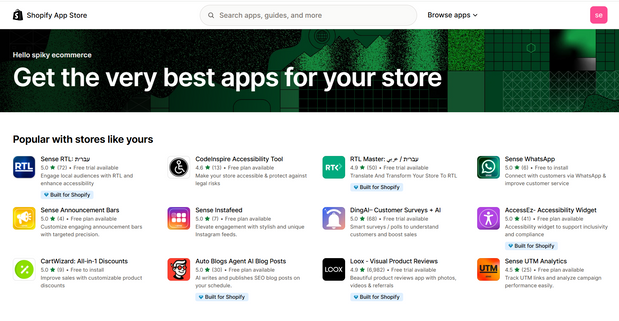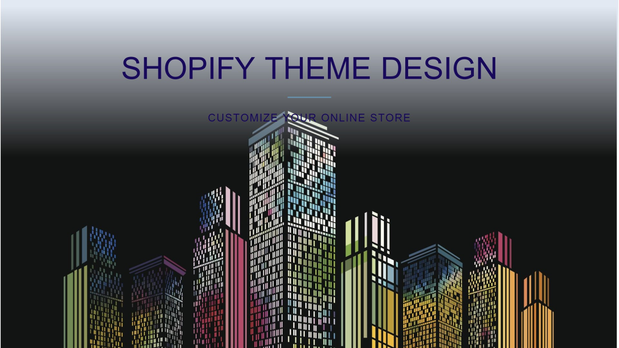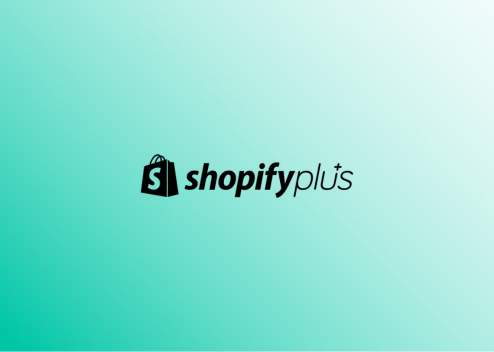
- Article published at:
Shopify App Store
Shopify covers the basics of any store, and everything beyond - there's a huge app ecosystem that allows you to adapt, accelerate growth, and maintain flexibility without compromising performance.
Reading time: ~6 minutes
TL;DR: Over 8,000 apps, a rigorous review process, a recommendation algorithm based on similar stores, and the ability to adapt to almost any need. The goal is to build a lean set of apps that brings measurable value, without duplication and without slowdowns.
What are the apps for anyway?
Speed of implementation: advanced features without development from scratch.
Flexibility: Change, test, and A/B before making a long-term decision.
Scale: Most applications were built to meet the loads of large stores.
Cost-effective: Add functionality as needed, paying only for what you use.
How to choose the right one? A short checklist
Clear goal: What is the metric we want to improve, conversions, AOV, uptime.
Performance impact: How many scripts are loaded, is there support for App Blocks and Checkout Extensibility.
Compatibility: format, language, currency, with existing applications.
Pricing: Monthly model, pay-as-you-go fees, trial period.
Support and documentation: guides, chat, update rate, ratings and reviews.
Security and privacy: what permissions are required, backing up and exporting data.
What's special about the Shopify App Store?
Huge variety: more than 8,000 apps for every need, design, marketing, operations, checkout, shipping.
Rigorous testing: Each app undergoes a review with over a hundred check points before publishing.
Smart Recommendations: Performance-based suggestions from similar stores, less guesswork and more accuracy.
Main categories in brief
Categories: Sales Channels, Product Discovery, Product Selling, Orders & Shipping, Store Design, Marketing & Conversion, Store Management Top categories: Dropshipping, Marketplaces, Product Reviews, Upsells and Bundles, Email Marketing, SEO, Shipping, Currency, and Translation.
Recommended apps by stage and need
Starter set for a new store
Product Reviews: Automatically collect and update reviews with images.
Email marketing: pop-ups, cart abandonment series, regular mailings.
Upsells and bundles: Complete offers on the product page and checkout.
Basic SEO: meta, URL optimization, schemas.
Translation and currency: localization for target countries.
Growth set for an active store
Loyalty and referrals: points, benefits, affiliate program.
Advanced search and filters: Improved product detection, Smart Sort.
Smart shipping and pricing: dynamic rates, packages, store pickup.
Analytics and pixel implementation: centralized pixel management, conversion events.
B2B set
Pricing by customer, price lists: wholesale accounts, minimum order.
Quick quotes and ordering: ordering tables, CSV files.
Customized payment and shipping terms: Net Plus, credit, multi-address shipping.
Recommended workflow for implementation
Needs mapping: a list of goals and metrics, without rushing to install.
Initial screening: 2-3 candidate apps for each need, tested against the template and existing set.
Measurable pilot: -Installation in a test environment or calm time window, running logs and conversion metrics.
Security hardening: reducing permissions, checking data exports and backups.
Performance hardening: Lighthouse testing before and after, load time monitoring.
Unification of the application set: removal of duplicates, conflict checking, full documentation.
Common mistakes to avoid
Over-installation: Too many apps without measurement, slowdowns and conflicts.
Incompatibility: Mixing applications that inject old code into modern sections.
Lack of documentation: There is no Owner for each application, no description of what it does.
Privacy disregard: Broad permissions, no deletion or export policy.
Frequently Asked Questions
How do I know if an app matches my template?
Look for support for App Blocks and Online Store 2.0, check for installation guides for common templates, and try a live demo. If you have a test environment, it's best to check there first.
You can switch between apps without losing data.
Check for export capabilities, e.g. CSV reviews, leads, subscription lists. If no export, consider a mediation tool or API import.
How to make sure performance is not compromised
Check ZRT, network requests, package size, and number of scripts. Prefer apps with App Blocks and server-side implementations where possible.
Resources for further study
Shopify Help Center: Official installation and operation guides.
API documentation: For developers who want dedicated customizations.
Shopify Community: Answers from the field, tips, community events.
Shopify Blog, Research: Trends, Customer Stories, A/B Testing.
Read article





